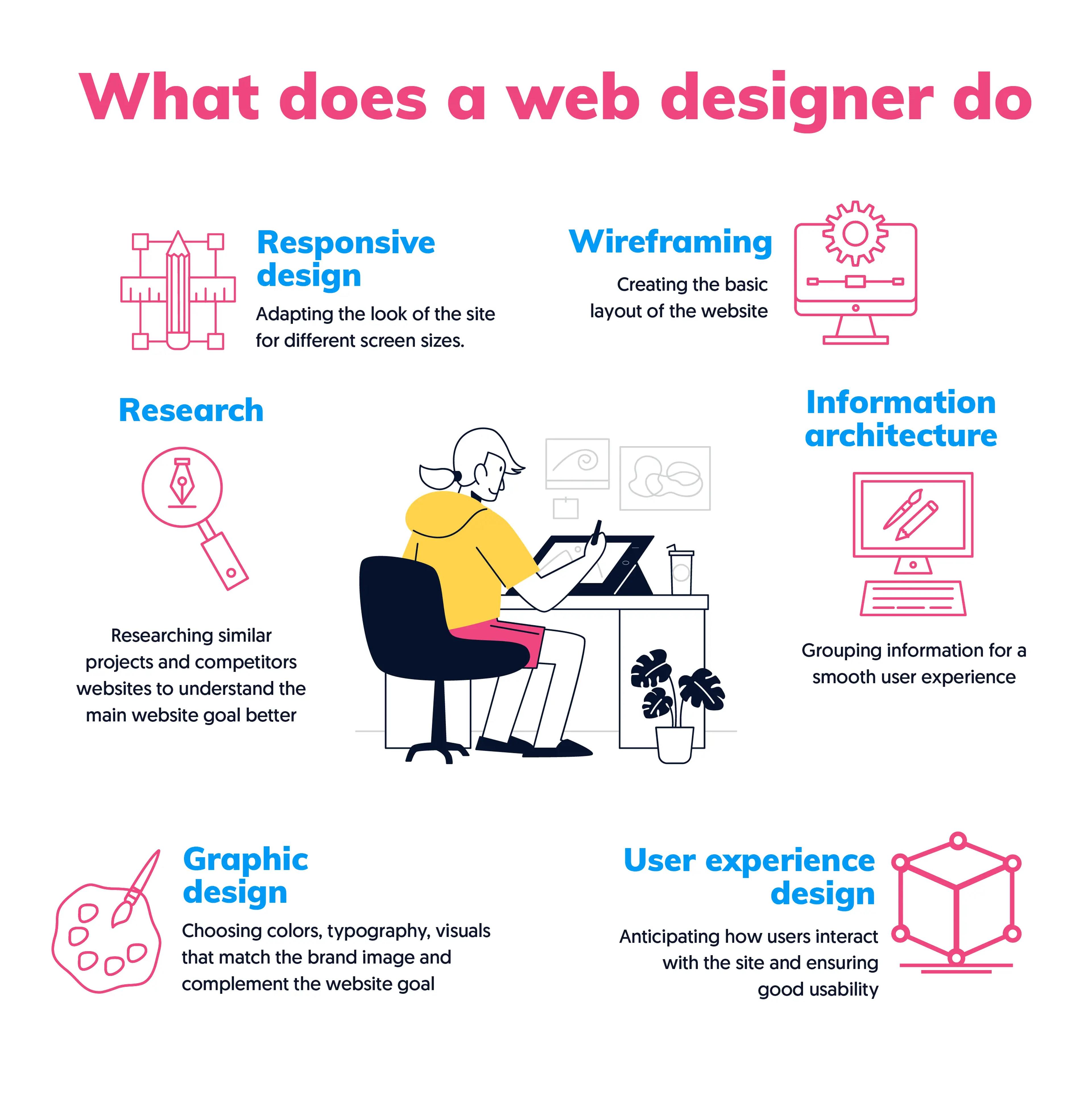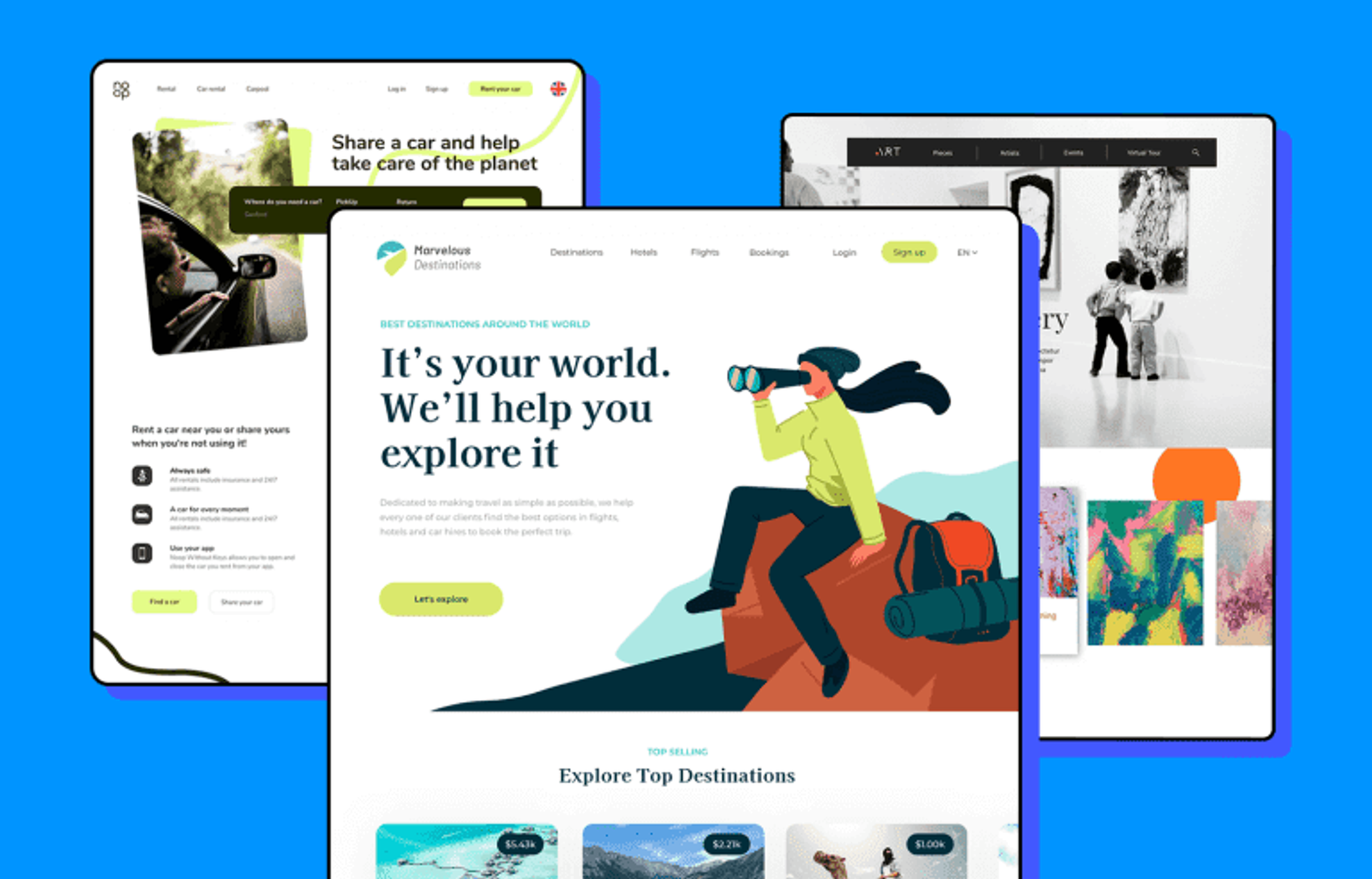Aligned Position Web Design: Crafting Visually Appealing Websites for Modern Businesses
Aligned Position Web Design: Crafting Visually Appealing Websites for Modern Businesses
Blog Article
The Ideal Sorts Of Website Design to Improve User Experience and Interaction
In the ever-evolving landscape of digital interaction, the performance of website design dramatically influences individual experience and involvement. Different layout techniques, such as minimal, responsive, and interactive layouts, each deal unique advantages that can deal with diverse user demands. Understanding which kinds of Web layout best serve these purposes can be pivotal for services intending to enhance customer fulfillment and retention. However, the question continues to be: which design elements absolutely resonate with users and foster significant involvement? The expedition of these concepts discloses crucial insights that may redefine your method to website design.
Minimalist Website Design
As electronic landscapes come to be significantly chaotic, minimal Web layout has actually become an effective method to improving individual experience. This style ideology prioritizes simpleness, concentrating on important aspects while eliminating unnecessary disturbances. By utilizing ample white room, simple navigating, and a minimal color scheme, minimal layout fosters quality and directs user interest to key material.
The core principle of minimalist website design is to create a seamless interaction for customers. By lowering cognitive tons, customers can quickly understand information without feeling bewildered. This direct approach not only enhances use but likewise motivates interaction, as visitors are more probable to explore a website that is aesthetically enticing and easy to navigate.
Furthermore, minimal style commonly highlights typography and images, using these components tactically to share messages successfully. This concentrate on important parts can boost brand name identification and create a memorable customer experience. Essentially, minimal website design is not just a pattern; it is a thoughtful method that recognizes the relevance of user-centered design. By removing away additional components, developers can develop a more appealing, reliable, and enjoyable Web experience for all users.
Receptive Website Design
In today's varied electronic environment, receptive Web layout has actually come to be essential for developing a seamless user experience throughout a plethora of devices. As users access sites on mobile phones, desktops, laptops, and tablets, the ability of a site to adapt its format and material to various screen sizes and resolutions is crucial.
Receptive Web layout uses adaptable grids, images, and CSS media queries to guarantee that Web material exists efficiently, no matter of the gadget used. This technique not just improves the visual allure of a web site however likewise dramatically enhances use. Customers are most likely to engage with a website that provides a consistent experience, as it removes the stress of having to focus or scroll exceedingly.
By taking on responsive layout, businesses can enhance their presence and reach a more comprehensive audience. In summary, receptive Web design is an essential technique that enhances individual experience, involvement, and overall complete satisfaction.
Interactive Website Design
Responsive Web style lays the foundation for enhancing user experience, however interactive website design takes this an action further by engaging individuals in an extra vibrant means - Aligned Position Web Design. By integrating elements such as animations, clickable prototypes, and real-time comments, interactive website design captivates users, drawing them into a richer browsing experience
This method not only cultivates involvement however likewise motivates customers to discover content proactively instead than passively eating it. Strategies such as gamification, where customers gain incentives for finishing jobs, can significantly enhance the time invested on a website and boost total contentment. Furthermore, interactive features can streamline intricate details, making it a lot more see here absorbable and satisfying.

Incorporating interactive layout aspects can also cause higher conversion rates, as users are a lot more likely to involve with a site that proactively entails them. Aligned Position Web Design. Inevitably, interactive Web style changes user experiences into unforgettable trips, making certain that visitors return time and again
Flat Style
Characterized by its minimalistic technique, level layout stresses simplicity and capability, removing away unnecessary elements and concentrating on necessary attributes. This layout philosophy focuses on usability, ensuring that individuals can navigate interfaces easily and effectiveness. By employing a tidy visual, flat design removes the clutter usually located in more ornate styles, thus improving individual concentrate on web content and functionality.
The hallmark of flat layout depends on its use vibrant shades, basic typography, and geometric shapes. These components add to a visually appealing interface that is both friendly and contemporary. Additionally, level design cultivates a sense of clarity, enabling users to recognize vital actions and info without disturbance.
In addition, flat layout is specifically reliable in responsive Web design, as its simplicity converts well across numerous tools and screen dimensions. By focusing on vital attributes, level design not only fulfills individual needs but also urges seamless interaction, making it an important part of efficient Web design techniques.
Flexible Website Design
Adaptive website design tailors the customer experience by creating several dealt with formats customized to various display dimensions and gadgets. Unlike receptive layout, which fluidly readjusts a single design, flexible layout uses distinct formats for details breakpoints, making certain optimum presentation on various platforms. This approach allows developers to concentrate on the one-of-a-kind features of each tool, boosting use by providing exactly what users need based upon their context.
Among the key benefits of adaptive website design is its ability to maximize lots times and efficiency. By serving tailored web content and pictures that fit the individual's device, websites can decrease information usage and improve loading rates. This is especially helpful for individuals with slower connections or minimal information plans.

Furthermore, flexible design assists in a more consistent and controlled branding experience. Considering that developers create several formats, they can ensure that the visual aspects straighten with the brand name's identity across various platforms - Aligned Position Web Design. This leads to a natural customer experience, enhancing interaction and advertising customer retention
Verdict
Finally, the combination of minimal, receptive, and interactive Web layout concepts considerably improves individual experience and visit interaction. Minimal layout cultivates quality and emphasis, while receptive layout ensures adaptability across various devices, promoting accessibility. Interactive design captivates users through dynamic elements, encouraging expedition and customization. Jointly, these layout comes close to add to the development of easy to use atmospheres that not only improve complete satisfaction but also drive greater conversion prices, emphasizing their critical importance in modern Web style techniques.

Minimal layout fosters clarity and emphasis, while receptive layout makes certain flexibility throughout numerous tools, advertising access. discover this Collectively, these style approaches contribute to the creation of user-friendly environments that not only improve satisfaction yet also drive higher conversion prices, emphasizing their essential relevance in modern Web design approaches.
Report this page